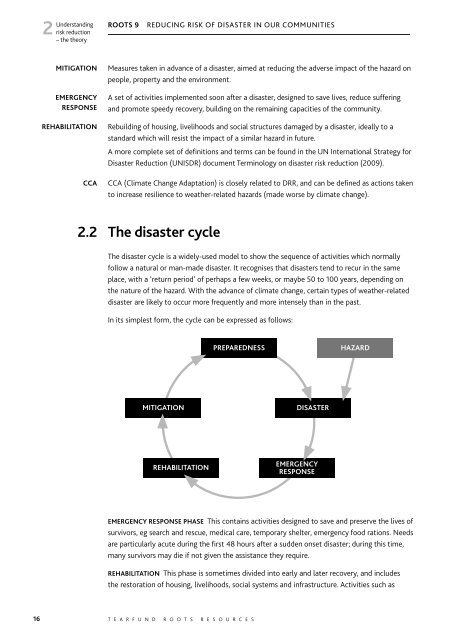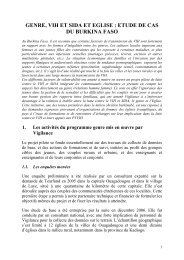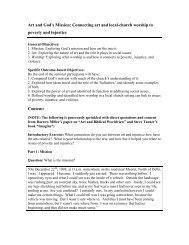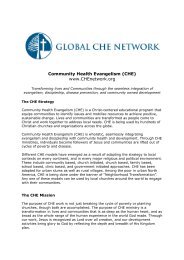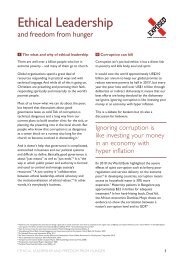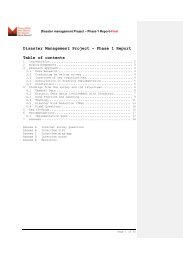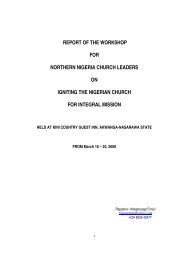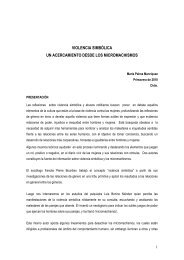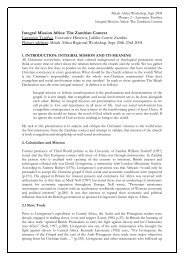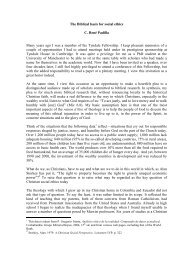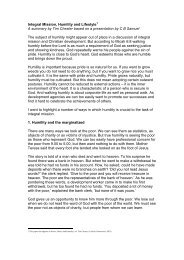Understandingrisk reduction 2– the theoryROOTS 9REDUCING RISK OF DISASTER IN OUR COMMUNITIESMITIGATIONEMERGENCYRESPONSEREHABILITATIONCCAMeasures taken in advance of a disaster, aimed at reducing the adverse impact of the hazard onpeople, property and the environment.A set of activities implemented soon after a disaster, designed to save lives, reduce sufferingand promote speedy recovery, building on the remaining capacities of the community.Rebuilding of housing, livelihoods and social structures damaged by a disaster, ideally to astandard which will resist the impact of a similar hazard in future.A more complete set of definitions and terms can be found in the UN International Strategy forDisaster Reduction (UNISDR) document Terminology on disaster risk reduction (2009).CCA (Climate Change Adaptation) is closely related to DRR, and can be defined as actions takento increase resilience to weather-related hazards (made worse by climate change).2.2 The disaster cycleThe disaster cycle is a widely-used model to show the sequence of activities which normallyfollow a natural or man-made disaster. It recognises that disasters tend to recur in the sameplace, with a ‘return period’ of perhaps a few weeks, or maybe 50 to 100 years, depending onthe nature of the hazard. With the advance of climate change, certain types of weather-relateddisaster are likely to occur more frequently and more intensely than in the past.In its simplest form, the cycle can be expressed as follows:PREPAREDNESSHAZARDMITIGATIONDISASTERREHABILITATIONEMERGENCYRESPONSEEMERGENCY RESPONSE PHASE This contains activities designed to save and preserve the lives ofsurvivors, eg search and rescue, medical care, temporary shelter, emergency food rations. Needsare particularly acute during the first 48 hours after a sudden onset disaster; during this time,many survivors may die if not given the assistance they require.REHABILITATION This phase is sometimes divided into early and later recovery, and includesthe restoration of housing, livelihoods, social systems and infrastructure. Activities such as16 T E A R F U N D R O O T S R E S O U R C E S
Understandingrisk reduction 2– the theoryROOTS 9REDUCING RISK OF DISASTER IN OUR COMMUNITIESrestoring water supply, rebuilding schools or re-establishing medical services easily merge intodevelopment, as replacements are generally better than the ones destroyed.MITIGATION AND PREPAREDNESS are generally seen as forward-looking, pre-disaster activities.They assume a future recurrence of the disaster event and seek to reduce the scale of sufferingnext time. Mitigation activities might include planting alternative crops, improving post-harvestmanagement of food, building stronger houses or improving water supply. Preparedness mightinclude contingency planning, warning systems, animal fodder banks or stockpiling someemergency goods.RISK REDUCTION AND THE DISASTER CYCLE The main disadvantage of the Disaster Cycle isthat it suggests a linear, chronological sequence of activities, with mitigation and preparednessfollowing the rebuilding of houses, livelihoods and infrastructure. In practice, future riskreduction should be incorporated into all parts of the cycle, beginning with the emergencyresponse. If risk-reduction thinking is delayed until later in the cycle (ie mitigation andpreparedness), opportunities for reducing future risk may be lost and the vulnerabilities whichexisted before the disaster may already have been rebuilt.Examples of risk reduction in emergency response and rehabilitation include the following:(activities marked with an asterisk* can also be described as CCA measures.)– Relief distributions Active participation of the community, both men and women, in deter miningneeds and best solutions; recognition and use of surviving capacities and social structures.– Cash-for-work (CFW) or food-for-work (FFW) projects These activities can be used not justto clear up debris but also to rebuild embankments*, dig flood diversion or irrigation channels*or construct small cross-dams*; community participation in selection and supervision ofCFW/FFW activities is essential. Some agencies use cash distribution without work in extremesituations, but this may foster dependency and miss a creative DRR opportunity.– Reconstructing houses Careful selection of safe sites after risk assessments; adoptinghazard-resistant designs*, materials* and orientation* of houses.– Restoring livelihoods Consideration of new, less disaster-prone livelihoods*, and how tomake them ‘disaster proof’; introduction of new crops* and/or livestock types*, which wouldbe suitable for a changed climate in future.– Ensuring water supply Careful attention to location* and design* of hand-pumps (to beabove flood levels); ensuring water points and pipes can resist flash flood or earthquakedamage (in seismic areas). Again the activity must allow for future variations in climate.– Provision of drought- or flood-resistant seeds* for planting These may be particularvarieties of an existing crop, or an alternative crop which can cope better with conditions ofwater shortage or water excess.The PADR methodology can be incorporated into the recovery process, usually at the end ofthe emergency response phase, so that the rehabilitation activities can be based on the PADRfindings and included in action plans.PADR can also be used as part of pre-disaster planning in areas where no disaster has occurredfor a while (eg earthquake zones). This is sometimes difficult, as community memory of adisaster will be weaker if 50 years or more have passed since the last big earthquake.© T E A R F U N D 2 0 1 017


